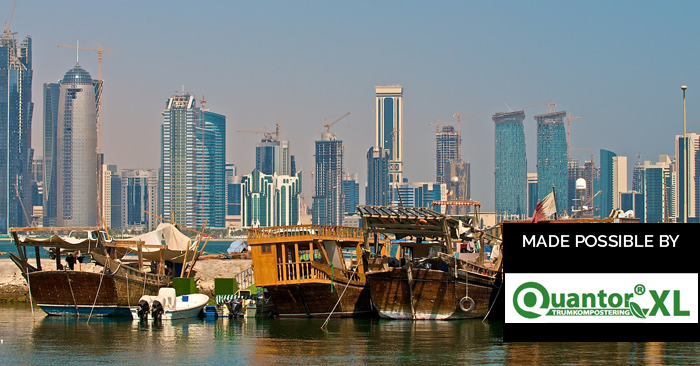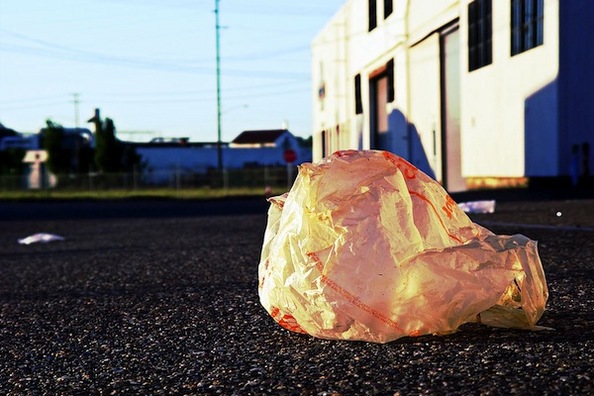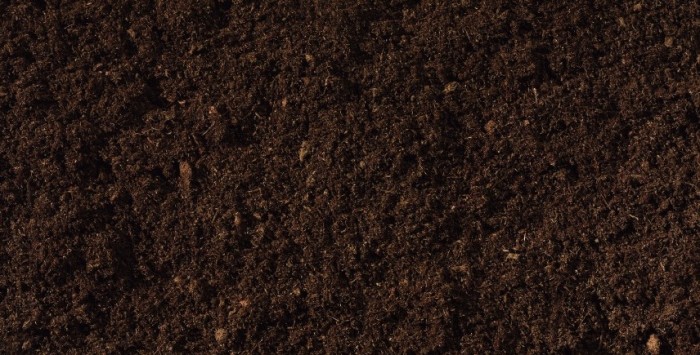Food Recovery & Onsite Composting in Schools & Institutions

This episode corresponds to Lesson 3 of our online course.
In this ninth episode, we examine a food recovery school program in Oakland, USA, with program director Kelly Ernstfriedman and an onsite composting program in Ioannina University, Greece, with Prof. Georgios Pilidis, in order to get a vision of how a 360 solution can work in schools and other institutions.
Thank you to Big Hanna Composter for making this episode possible.
The original since 1991, and now installed in more than 25 countries, Big Hanna’s five standard models of on-site in-vessel composters range from 75 to 2400 kg of food waste per week, for housing areas, prison, schools, canteens and restaurants. For more information, visit www.bighanna.com
TRANSCRIPT
Kelly ErnstFriedman:
EM: Let’s just start I suppose with a little background information – you started the Food for Kids program back in May 2013, yeah?
KE: We did, we did. We were approached by Nancy Deming, who works for – she’s a consultant for the Oakland Unified School District, and she works for a program called Green Gloves, which is all about greening the Oakland school system. And she had been seeing a lot of the waste that’s been going on – she works on various initiatives in the schools, including a sorting program, which is the basis for our food donation program. Instead of everything going to the landfill, she’s working on getting the schools to sort their trash at lunch. And then they have something called a Food Share, which is basically, the kids – especially at the elementary and middle-school age, where their bellies are a little smaller and they’re required to take a certain amount of food and they often don’t eat it. So the Food Share bin gives them a chance to put that in there and if someone else decides “hey, I want another milk” then they can take that during the cafeteria period. But then after that cafeteria period, that food goes into the landfill, or the compost.
And so Nancy really wanted to connect with someone who could take that food and then donate it. Thanks to the Bill Emerson Food Recovery Act, which was passed in the U.S. In 1996, organisations are encouraged to donate food. It’s sort of a liability coverage that says that unless there’s gross negligence, non-profits can take this food, or businesses can donate this food and get it out to people that are hungry. So, we kind of had the legislation there behind us, we just needed to figure out a system that worked for Oakland. And we started our pilot in May 2013 with two schools – two elementary schools – and we recovered over three thousand pounds of food, and worked with about thirty families just in about six weeks.
EM: That’s great. And how much would you recover now per month, say?
KE: We…total, we’ve gotten about, I think forty-five hundred pounds of food in the last six months. And we average probably thirty to fifty pounds a week. One of the schools that we’re going to be starting in the next couple of weeks – we did a survey and they had fifty-five pounds of food from one day of lunch.
EM: That’s a lot of food.
KE: It is. It is (laughs).
EM: And does it all get distributed then?
KE: Yeah, all of the poundage that we note – all of that gets distributed.
EM: That’s very good. And to touch on the regulations again, is it primarily the regulations that are preventing schools and other public places from distributing food?
KE: It is, it is. Because the food comes from the Government, there’s very strict rules on what can and can’t go back to the kitchen, and that’s been another part of the program as well, sort of educating the kitchen managers and staff about what can be returned. So for example, if they have apples or pears that go out and go into the Food Share; if those are in pretty good shape, and the kitchen manager has the opportunity to make the call and say “you know what, I think I can use these again tomorrow, or the next day, they’re going to hold up”, they can take those back into the kitchen, clean them off and re-serve them. Anything that hasn’t had a, kind of, heat differential, that can go back in and be re-used.
But anything that has had some kind of temperature change – we see a lot of cartons of milk, for example – some of our schools are satellite cooking kitchens, which means packaged food comes in that gets heated up, so they’ll have a plastic wrapped piece of pizza, or a burrito, or a baked potato with cheese and broccoli – anything like that would have to go into the trash before we came along. But now that we’re here, then immediately after the period, that goes back into refrigeration or the freezer, depending on the site – and then that is distributed either to the students and their families during a distribution period at the school, or it’s connected with a community partner: a soup kitchen, a church – some organisation doing food assistance – and is given back to the community.
EM: Right, okay. And do the schools that you work with compost their waste already, or is that something that hasn’t been done yet?
KE: Yes. That’s actually a great first step to setting up a type of food recovery program, because you want to make sure you’re getting the food – you don’t want to have to actually, you know, go through the bin and do a dumpster dive type exercise where you’re cleaning things off. So having a sorting system that includes compost and includes a food share is absolutely essential. And that’s the first step in how we choose the schools that we’re expanding to is do they already have a Green Gloves in place, or can we get a sorting system up and moving relatively quickly so we can begin the food recovery.
Because that’s just…that takes a little bit of onus off the process when that’s already done, and you can say “okay, here’s the box of food that gets donated – great, that’s done, that’s neatly packaged – let’s hand that off to the parents,” or “let’s hand that off to the community organisation”. So definitely, I think composting and sorting is vital.
EM: Excellent, so they work well together side-by-side?
KE: Yeah.
EM: And would you say that composting and the food recovery program are a good educational tool for students as well?
KE: We hope so. That’s actually, sort of, the next phase that we would like to work on is getting the education component in there, because we have hand outs and, you know, we talk to the parents and the kids. And that’s one of the feedback from one of our pilot schools, Brookfield, saying “this is really important, this is the message that we want to be sending our kids, is that food…you know, food is a resource, food isn’t something you take a bite of and you throw away and you really have to think about that”.
Thankfully, you know, because of Nancy’s work with the Green Gloves program and the sorting, the kids are already getting a sense of that. One thing that’s really fun to see when we do site visits is; we go in at lunch and you see these kids, especially the youngsters that come over, and they’re really looking at the bins and saying “okay, is this landfill? Is this compost? Is this food share?” And you just, kind of, see them working it out, and then they put something in the food share bin and we say thank you, and they just get this big smile on their faces. So, you know, it’s definitely a group effort and all of these different things working together – the teachers as well have been very supportive of the program, and you know, they want to see the kids getting more nutrition and understanding about food and the food system, so
EM: Yeah, well that’s never a bad thing. And I know you’ve been running this in schools, but could you see this type of program running well in a university, say, or other types of spaces, like maybe restaurants, for example?
KE: I think that, not necessarily this program, but there is potential for other programs to work. In the United States, we have a lot of really exciting initiatives going on: there’s the Food Recovery Network, and Food Recovery Network is all about creating student-run food recovery networks in universities. And they have, I want to say over twenty or thirty schools that are participating, and then they had another sixty requests from students that want to start a program. There’s also really great restaurant initiatives that are going on. Out of Austin Texas there is Go Halfsies, which is a group that’s working with restaurants to help them offer smaller portion sizes. So they would have a meal, it would be half the size and the difference in price would be donated towards a hunger relief organisation. You know, there’s all different kinds of ways that businesses can get involved, really specific to what their business is. Restaurants have a great opportunity to donate food and to create compost programs. Schools, especially, you know, large universities with multiple cafeterias – there’s a huge opportunity there to divert waste, and also to get students involved in the process, which I think is really important as well.
EM: Yes, definitely. And for those listening in who might be interested in setting up a similar initiative – could you maybe give a bit of general advice or share some insights into how best to go about setting up a program like this?
KE: I think the biggest thing, you know, regardless of what country or what school district you’re in, is really working with the school and working with the parents and the staff. Because with any new program, to make it work you have to make sure it works with what’s already going on. Particularly with a resource-strapped staff, you don’t want to come in and say “here, we’re going to give you a whole bunch of new tasks”, you know. So, talking with them about the problem of food waste, and then figuring out a way that’s going to work best for them. Some schools are going to need to do distribution twice a week, some are going to need to do daily. You know, looking at the amount of surplus you have is a great way to start: doing some kind of survey with the kitchen management – just to look at okay, “how much milk are we getting in? How much extra food do we have?” And really working with each site and making it very site-specific. There’s not, sort of, a once-size-fits-all. There’s definitely steps you want to take in terms of talking with the schools and finding parent volunteers, or if you don’t have a strong parent volunteer group, which several of our schools don’t, you can partner with another community organisation. We have several schools that are going to start – they’re going to be working with community partners (churches and soup kitchens) that are going to come and pick up that food every day. So, it’s a much smaller ask for the community, but we’re still recovering that food, we’re still getting that food to people that are in need.
EM: Yeah, which is the most important thing. And what’s the future vision for food shift then?
KE: The large vision for Food Shift is that we can create a fee-for-service food recovery network. We believe that food recovery should be compensated in the same way that waste management is. In the same way that we pay for people to pick up our trash, our recycling, food recovery should be valued in the same way. It’s difficult with school districts because they’re so resource-strapped, but what we see, sort of the larger vision, would be policy changes around food recovery. So, you know, cities and municipalities, and maybe even the federal government would eventually put money behind this and say “yes, this is important, we’re going to pay for this service”. So not necessarily the schools themselves, and it’s not going to be, you know, it’s not a get rich quick kind of thing, but ideally yes, that that would be compensated. But that’s a much further down the line vision.
EM: That was Kelly Ernstfriedman, program director of the Food for Kids program, with some great insights and advice on running a food recovery program in a school setting. We go into detail about potential models for edible food recovery in lesson 3 of our online course, and list the key steps on how to get started.
And while our next guest doesn’t work directly with a food recovery program, he does have great experience with onsite composting in a University campus. Professor George Pilidis is a member of the Biological Applications and Technology department of the Ionannina University in Greece. Ioannina University is the first to start composting its waste in Greece and Prof Pilidis has been monitoring the composting program’s performance very carefully, so we’ll get into a little bit of detail on how it all works, and any issues they had along the way.
Prof. Georgios Pilidis:
EM: So Georgios, Ioannina is the fourth biggest university in Greece, I’ve heard you started recycling back in 2008, but when did you start composting organics?
GP: So I have to say, we have started earlier. Fifteen years ago, we had started to recycle our laboratory waste. This was the first step, and a very important one, because we were the first university [to do it] in Greece. We have started for the management of the solid waste in 2009, and the composting system was part of the solid waste management within the university campus; where we have approximately twelve thousand students – undergraduate students – plus two thousand post graduate students, so in total, fifteen-thousand people are living in this area.
EM: Okay, you must have quite a few restaurants and canteens then?
GP: We have two restaurants and we have fourteen canteens.
EM: So yeah, that’s quite a lot.
GP: Yes. (laughs).
EM: I imagine that’s lot of food waste too, then?
GP: Yes, we have approximately one hundred kilograms food waste per day.
EM: Right and how much compost does that make in the end?
GP: So, according to our studies, fifty percent of the carbon is released in form of carbon dioxide, while the other fifty percent is being converted into a first-class compost. This means we have approximately fifty kilograms of compost per day.
EM: Okay, and how do you manage the compost then, do you sell it?
GP: So, this compost is used mainly by the gardeners of the university, and for this reason we do not have any chemical fertilisers within the campus. As well as, it’s used by people which are working in the university.
EM: Well, that’s a great use of compost.
GP: Yes.
EM: And you were the first university in Greece to start composting?
GP: Mh-hm, exactly.
EM: Yeah, how did the students react, did you have a lot of education to do beforehand?
GP: Yes, the students reacted very positively. We have located this composter directly under the student restaurant, in the basement – it’s an open-air basement of course – and we have also bought an air filter, therefore we do not have any bad smell. The only smell which is coming out is during the maturation process, which is taking place outside of the composter. And we use this composting unit also for didactical issues: many schools are coming here and visiting this composting unit, children, and….this educational process is excellent.
EM: That’s great. Yeah, the educational opportunity, I guess, is a good reason to have a composting unit in a school and university…
GP: Yes.
EM: And can you tell us a little bit about the composter itself?
GP: The composter is a big one – a closed system – the dimensions are approximately five meters long, and two meters in the height, and capacity is four cubic meters, the cylindrical capacity, and this composter is able to treat between four hundred kilograms and one thousand, two hundred kilograms food waste per week. We have approximately six hundred to seven hundred, so we manage this very well.
EM: That’s great. And it’s important to pick the right equipment for your specific needs – what was important in your decision, then, when it came to choosing a unit?
GP: The first and important thing is the material where this composting unit is made. The stainless steel, for example, the quality of the stainless steel is very, very important. And also, of course, the mechanical part, because our composter unit has temperature sensors automatically we have also aeration, and rotation of the drum [it all works] automatically, and this electronics should work very well. But the most important for me is the frame of the composting unit, and the material which is used.
EM: Right, and how do you handle contamination in the input stream of your composting unit?
GP: We are very happy because only one person is responsible for that from the university restaurant. And this person collects the waste, and we made recommendations to him, what kind of food waste he should [put] in the composting unit, and he’s very careful of course. The input is very important: you should avoid to have foreign subjects, for example glass or plastics or stones, or something like that.
EM: Yeah, it sounds like it’s a well controlled system – and this composting program was a pilot program to see if it could work elsewhere, is that correct?
GP: Mh-hm. The pilot program works very well, and Greece as [a] country is really far away from a good system for solid waste management. It’s the biggest environmental problem in Greece at the moment, and we thought that the university should play a pioneering work on that, and we made this, I think, [unclear] with success, due to the fact that we are going in many symposiums and national conferences, and we are presenting this…I think we’re well-known, at least in Greece at the moment.
And at the moment, as far as I know, the municipality of Ioannina is going to buy also such types of composters in order to place them in different places of the city: Ioannina is the seventh-biggest city in Greece with approximately one-hundred and twenty thousand inhabitants. And they’re going to place five or six such composters in places close to restaurants. I do not know exactly the plan, but they’re going to buy five or six composters like this.
EM: That’s great to see it expanding. And permits and regulations apply in most countries and can be quite strict – what’s the situation in Greece and did you have any issues?
GP: No, the Greek government has not any regulations on the quality of compost or the operation of composting units, but there is the European Compost Net, and they set some quality criteria. But according to my opinion, this criteria should be expanded also to organic compounds, not only to heavy metals and xenobiotics or foreign subjects etcetera, or microorganisms, they should also focus on organic compounds and this has been not done. And in order to be a member of this Compost Net, you have to produce a compost which has the regulation which was set up by this Compost Net. But these regulations, according to my opinion [are] very high – for example if you say, for lead for example, it’s approximately one hundred milligrams per kilogram and this is too much.
EM: That’s too much?
GP: Yes, it’s too much for me, or for nickel, it’s twenty-five milligrams per kilogram, this is also too much. They should be more stronger.
EM: Okay interesting, and compost quality standards is an important and quite serious subject that unfortunately we don’t have time to get into right now since we’re running out of time, but George just to finish up – do you have any final words on the success of the composting program or?
GP: No no, we’re very happy to have this composting unit here. We’re very happy that we’re the first university which is using this solid waste management system within the campus. And, of course, many people are coming and visiting us, and I’m going everywhere and giving lectures on that, and I’m very happy.
EM: Well that’s great, that’s great news. Thanks for talking to us today, Georgios.
GP: Okay, thank you very much.
EM: Okay all the best.
GP: Okay, bye.




